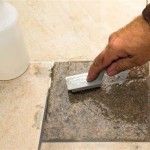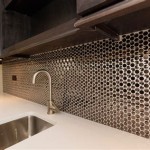How Much Does Floor Tile Installation Cost?
The cost of floor tile installation is a multifaceted issue, dependent on a range of factors that can significantly alter the final price. Accurately estimating the expenses associated with this home improvement project demands a thorough consideration of these variables. This article explores the key elements that influence the cost of floor tile installation, providing a comprehensive overview to assist homeowners in budgeting and planning.
Understanding the fluctuating rates is crucial for anyone considering installing or replacing floor tiles. While a general price range might be readily available, the actual expenditure can vary considerably depending on the specifics of the project. This article will dissect the various components that contribute to the overall cost, ensuring that readers are well-equipped to make informed decisions.
Tile Material and Its Impact on Installation Cost
The type of tile selected is a primary driver of the overall installation cost. Different materials possess varying price points and installation requirements, directly impacting the labor costs and necessary supplies. Common tile materials include ceramic, porcelain, natural stone, and luxury vinyl tile (LVT), each with distinct characteristics that affect both the material cost and the complexity of the installation.
Ceramic tiles are typically the most affordable option. Their relatively low cost and ease of cutting and handling often translate to lower installation labor costs. Porcelain tiles, while more durable and water-resistant than ceramic, are also denser and require specialized cutting tools, potentially increasing labor expenses. Furthermore, the quality of the porcelain (through-body vs. glazed) can affect the price as well as its durability and suitability for different applications.
Natural stone tiles, such as granite, marble, slate, and travertine, are at the higher end of the price spectrum. The cost of the material itself is significantly greater, and installation is often more labor-intensive. Natural stone requires expert handling to avoid damage during cutting and setting, along with specialized sealants and maintenance to prevent staining and deterioration. The inherent variations in natural stone also demand careful planning and layout to achieve a visually appealing result, adding to the complexity and time required for installation.
Luxury vinyl tile (LVT) offers a cost-effective alternative, often mimicking the appearance of wood or stone. LVT is relatively easy to install, with options including glue-down, click-lock, and loose-lay systems. The simplified installation process generally leads to lower labor costs compared to ceramic, porcelain, or natural stone. However, the quality of the LVT, including its wear layer and overall durability, will influence its price point. Premium LVT will command a higher price tag but offer improved longevity and aesthetic appeal.
Beyond the primary material, specialized tiles like glass or mosaic tiles also significantly increase installation costs. These tiles often require meticulous preparation, precise cutting, and specialized adhesives. Their intricate nature makes the installation process time-consuming and requires a high level of skill, which is reflected in the increased labor charges.
The size and shape of the tile also impact the installation cost. Smaller tiles require more labor to install per square foot than larger tiles. Intricate patterns and layouts, such as herringbone or geometric designs, demand additional cutting and planning, further increasing labor costs. Large format tiles, while covering a larger area quickly, require impeccable subfloor preparation and specialized handling equipment, which can also add to the overall expense.
Labor Costs and the Role of Professional Installation
Labor costs represent a significant portion of the total floor tile installation expense. These costs are influenced by factors such as the complexity of the project, the installer's experience and location, and the extent of subfloor preparation required. While a DIY approach might seem appealing to save money, professional installation ensures proper execution and long-term durability, minimizing the risk of costly mistakes and future repairs.
Experienced tile installers possess the knowledge and skills necessary to assess the subfloor, prepare the surface, and accurately lay the tiles, ensuring a level and secure installation. They also have access to specialized tools and equipment that are essential for achieving a professional finish. Improper installation can lead to issues such as cracked tiles, uneven surfaces, and moisture damage, ultimately requiring costly repairs or replacements.
Labor rates for tile installation can vary widely depending on geographical location. Areas with a higher cost of living typically have higher labor rates. The complexity of the project, including the size of the area to be tiled, the type of tile being installed, and any intricate patterns or designs, will also affect the labor costs. Projects requiring extensive subfloor preparation, such as leveling uneven surfaces or repairing damaged areas, will incur additional labor charges.
Obtaining multiple quotes from different tile installers is crucial for securing competitive pricing. When comparing quotes, homeowners should carefully review the scope of work included in each estimate, ensuring that all necessary tasks, such as subfloor preparation, tile cutting, and grout application, are accounted for. It is also important to verify the installer's credentials, insurance coverage, and references to ensure professionalism and quality workmanship.
The extent of demolition and removal of existing flooring will also impact labor costs. Removing old tile, linoleum, or carpet can be a time-consuming and labor-intensive process, particularly if the existing flooring is difficult to remove or if it requires special disposal. This additional work will be reflected in the overall cost of the project.
Furthermore, the accessibility of the installation area can influence labor costs. If the installation area is difficult to access, such as a small bathroom or a basement with limited access, the installer may charge a higher rate to compensate for the increased difficulty and time required to transport materials and perform the work.
Subfloor Preparation and Related Expenses
Proper subfloor preparation is paramount for a successful and long-lasting floor tile installation. The subfloor provides the foundation for the tiles, and any imperfections or inadequacies can lead to problems such as cracked tiles, uneven surfaces, and moisture damage. The extent of subfloor preparation required will depend on the existing condition of the subfloor and the type of tile being installed.
Common subfloor preparation tasks include cleaning, leveling, and reinforcing the subfloor. Cleaning involves removing any dirt, debris, and residue from the surface to ensure proper adhesion of the mortar. Leveling is necessary to create a smooth and even surface for the tiles, preventing unevenness and potential cracking. Reinforcing the subfloor may involve adding plywood or cement backer board to increase its strength and stability.
The cost of subfloor preparation materials and labor can vary depending on the extent of work required. If the subfloor is severely damaged or uneven, more extensive repairs may be necessary, significantly increasing the cost. Self-leveling compounds, plywood, cement backer board, and fasteners are common materials used in subfloor preparation, and their cost will depend on the size of the area and the specific requirements of the project.
In some cases, it may be necessary to install a moisture barrier to prevent moisture from seeping through the subfloor and damaging the tiles. This is particularly important in areas with high humidity or in basements where moisture is prevalent. The cost of a moisture barrier will depend on the type of barrier used and the size of the area being covered.
The expertise of a professional tile installer is crucial for assessing the condition of the subfloor and determining the appropriate preparation methods. An experienced installer can identify potential problems and recommend the necessary repairs or modifications to ensure a successful installation. Attempting to cut corners on subfloor preparation can lead to costly problems down the line, so it is essential to invest in this aspect of the project.
Furthermore, the type of subfloor material will influence the preparation requirements. Concrete subfloors typically require different preparation methods than wood subfloors. Concrete subfloors may require leveling and crack repair, while wood subfloors may need reinforcement and moisture protection.

What Is The Average Cost To Install Tile Floors Rubi Blog Usa

How Much Does Tile Installation Cost 2025 Guide

How Much Does Tile Installation Cost 2025 Guide

Floor Replacement Cost To Refloor A House Fixr

Cost To Install Tile The Home Depot

Floor Replacement Cost To Refloor A House Fixr

Tile Flooring Installation From Lowe S

Cost To Install Tile The Home Depot

Complete Guide On How To Install Ceramic Floor Tiles Rubi Blog Usa

Complete Guide On How To Install Ceramic Floor Tiles Rubi Blog Usa
Related Posts








